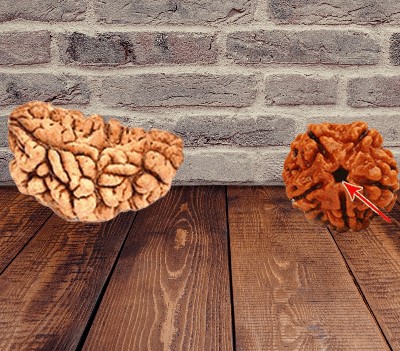There are numerous ways to differentiate between a rudraksha and a bhadraksha. Bhadraksha is a number of rudraksha, but is generally considered to be inferior than rudraksha. Though both come from the same kind of tree, there is a noticeable difference in their shapes.
Rudrakshas are usually properly circular in shape, especially the high quality ones from Nepal. Bhadrakshas are more shapely and usually designed like a new-moon. These are mostly found in India and Sri Lanka. Bhadrakshas are also lighter in weight than rudrakshas because of lesser thickness. Here’s a picture of bhadraksha beads…

The top protrusions of bhadrakshas are less sharper and less harder than rudrakshas.
One more very easy way to check for the natural gap. Bhadrakshas do not have a natural hole while rudrakshas have holes on either side for passing a chain through them. Likewise check if the slots are properly cylindrical. In case it is, then the hole has been artificially drilled. Normally, the hole would be irregular.
In the event you drop a rudraksha in water, it is going to sink to the underside while a bhadraksha always floats for a time before sinking in slowly with minor wavy movements.
In case you put a rudraksha in a copper vessel with normal water, it rotates automatically. There is no such phenomenon visible for a bhadraksha.
It is said when you place a genuine rudraksha in your right palm and close up it, you will feel certain vibrations. Then you could make certain that it is authentic. Right now there is nothing of the type for a bhadraksha.

Hope this helps in answering properly


